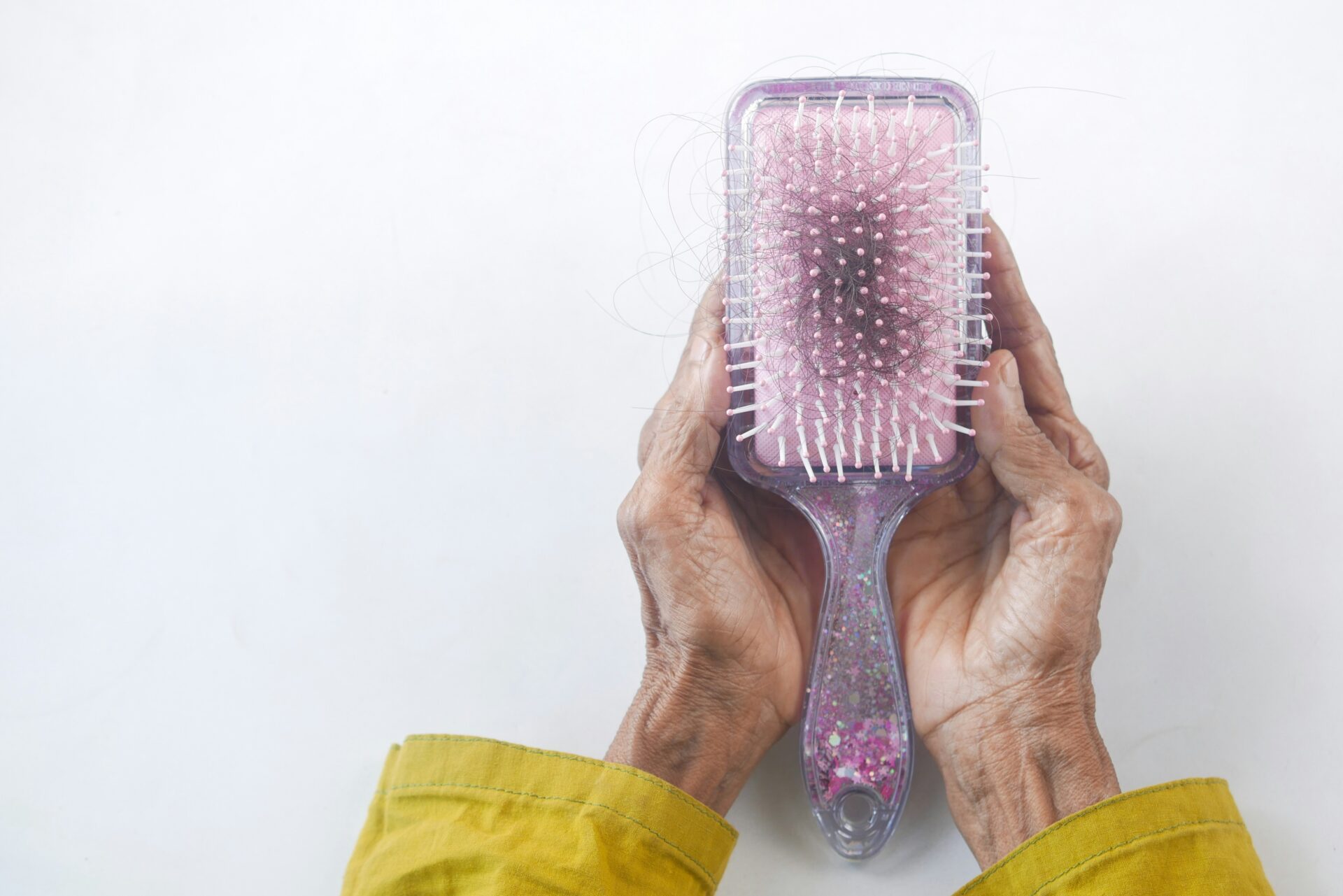In the past, hair loss was an unavoidable rite of passage that led us into old age. It was impossible to combat, often passed down through family genetics, and affected tens of millions every year.
We’ve stopped at nothing to cover up our thinning manes to avoid the embarrassment of a receding hairline. Unfortunately, these quick fixes were obvious, costly, and became the butt of many jokes.
Thanks to low-level laser therapy (LLLT), those struggling with hair loss can thwart their genetics and say goodbye to unnatural-looking toupees, combovers, and hair plugs. Red laser light is now an effective treatment option for those with thinning hair.
A growing body of studies suggests that LLLT can stimulate follicles and promote hair growth. Though it sounds like something out of a sci-fi movie, it’s a viable new option for treating hair loss.
The future is here, and it looks like long, luscious hair. Let’s further examine LLLT to see how it can restore your mane.
Why Do We Lose Hair?
Though it can be a source of embarrassment and cause a lack of confidence, hair loss is common. The American Hair Loss Association estimates that 85% of men have thinning hair by age 50. And it affects almost 50% of women, too.
Below are the leading causes of hair loss.
Pattern Baldness
The most common cause of hair loss is called androgenetic alopecia, or pattern baldness. In these cases, a hormone called dihydrotestosterone (DHT) prohibits the hair’s growth cycle. This interference causes hair follicles to shrink, leading to thinning hair.
Under Pressure
Stress and illness can also cause hair loss. This type of thinning is called telogen effluvium. It usually affects the entire head instead of stemming from a single spot. Fortunately, it is generally temporary.
Tight Hairstyles
Certain hairstyles can also cause hair loss. Tight ponytails, buns, dreadlocks, or braids can put too much pressure on the hair follicles and cause damage. This type of hair loss is called traction alopecia. If left untreated, it can become permanent.
What Is Low-Level Laser Therapy?
It sounds like something from the future, but LLLT is quite simple. At its core, it is a monochromatic red laser used to illuminate hair follicles at a precise wavelength and intensity. But don’t let your imagination run away with you. This isn’t the type of laser beam that would blast across space and time.
LLLT has been around for over fifty years. It was first discovered in 1967 by Hungarian scientist Endre Mester. He found a low-intensity red laser aided his lab mice’s recovery time and hair growth.
In subsequent decades, LLLT has proven to have a biological effect on cells, tissues, and organisms. Your cells convert the red light into usable energy, similar to how plants get energy from the sun. The enzymes within the mitochondria of your cells get energy from red light, enhancing cellular respiration and helping cells sustain themselves.
How Does LLLT Work?

Image by Engin Akyurt from Pixabay
LLLT works by slowing the process of hair follicles shrinking, which leads to shorter growth phases. This process, known as miniaturization, produces very short and thin hair fibers, making your scalp visible.
By illuminating the scalp with a red laser, stem cells absorb light energy in a region of the follicle near the base called the dermal papilla. Because the red light energizes the cells, it enhances their cellular respiration and metabolic efficiency.
The cells’ increased activity of cellular and biochemical interactions forces the hair follicles to spend additional time in the hair cycle’s growth phase. All this action slows and, in some cases, even reverses miniaturization. This approach means that hair loss is treated by LLLT at the root of the cause—literally.
In addition to enhancing cellular activity, LLLT also promotes blood flow to the scalp. This allows more nutrients and oxygen to be delivered to the hair follicles, supporting healthy hair growth.
What to Expect with LLLT
LLLT has shown an excellent success rate in slowing down or stopping hair loss. Studies reveal that 85% of LLLT patients experience slowing or stoppage of hair loss. In addition, over 50% of patients reported new hair growth.
It’s hard to argue with such great results. But, it’s important to note that LLLT does not work when hair follicles are dead. Because this treatment stimulates hair follicles, those that no longer exist cannot reap the technology’s benefits. For this reason, LLLT is not a viable treatment option for those who have been bald for many years.
Starting LLLT as soon as you notice hair thinning provides the best results. The sooner treatment begins, the better results patients can expect. Once the treatment begins, results typically start after two months and continue over the following months.
Interruptions in treatment will cause hair loss to resume. It’s important to note that LLLT is a treatment that only works with continued use.
LLLT Treatments
There are many ways to reap the benefits of LLLT treatments. Those who feel more comfortable in the hands of a medical professional can opt for in-office treatments. These sessions are reminiscent of visiting an old-fashioned hair salon; only the hood or overhead panel emits a red laser.
Portable devices are also available. These convenient options allow for LLLT therapy on your schedule. Many device styles are available based on personal preference, including combs, brushes, laser hair growth caps, and helmets.
When shopping for portable devices, verify that the product is FDA-cleared and has undergone electrical safety testing.
The Final Word on LLLT
For the longest time, we believed hair loss was a hereditary burden. Even though most adults experience some form of hair loss, we collectively shrugged our shoulders and chalked our receding hairlines up to birthright. Fighting it was considered a losing battle.
Those brave enough to try alternatives often looked worse off, with awful hairstyles and wigs calling even more attention to their lack of hair.
But technology now offers us a better way. Don’t pull out the little hair you have left while stressing over your thinning locks. Thanks to follicle-activating lasers, we now have a viable option for slowing and even regrowing hair.











